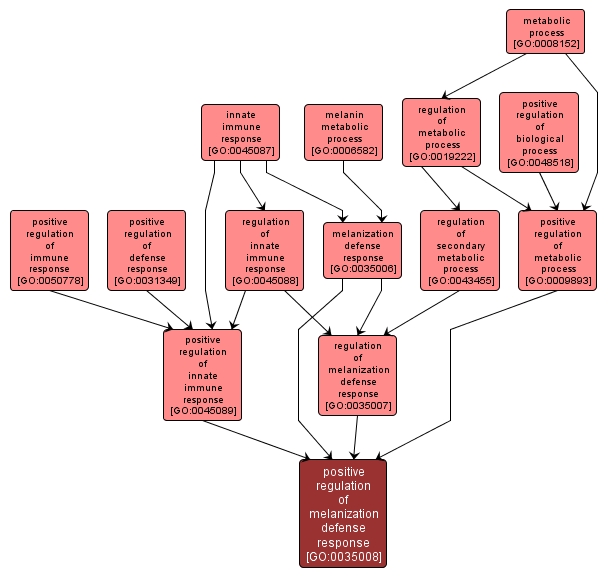GO TERM SUMMARY
|
| Name: |
positive regulation of melanization defense response |
| Acc: |
GO:0035008 |
| Aspect: |
Biological Process |
| Desc: |
Any process that increases the rate or extent of the melanization defense response during injury or invasion. |
Synonyms:
- activation of melanization defense response
- upregulation of melanization defense response
- stimulation of melanization defense response
- up regulation of melanization defense response
- positive regulation of melanization defence response
- up-regulation of melanization defense response
|














